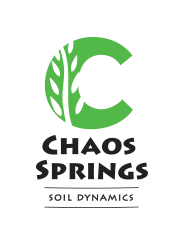Fertilizer: What The Heck Is It?
/What is a Fertilizer?
A fertilizer can be natural or synthetic (of course natural is best for a variety of reasons). Fertilizers can be applied to the soil or to the plant in a solid or liquid state. The idea is to give a plant what it needs for optimum growth. However, during the development of fertilizers, growth was really the only factor taken into consideration. The health of the plant or the animals and people that eat those plants was initially not really considered. As a result, plant growth and yields were increased, often along with reduced plant nutrition and increased plant and animal diseases. But what is it that a plant really wants?
The Plant-Soil-Atmosphere Relationship - PSAR
Plants need several things to be healthy, thrive and produce nutritious food for animals and humans. They get what they need through a relationship with the soil and the air. This relationship can be enhanced with fertilizers, or it can be harmed. Over fertilization or the use of certain chemicals reduce the plants’ ability to access the nutrients they need through a natural system and creates a reliance on those chemicals. So, the goal of any fertilizer or plant nutrient program should be to enhance the PSAR Plant-Soil-Atmosphere Relationship.
Solid Fertilizers
Solid fertilizers or minerals are, as the name implies, dry processed nutrient or raw minerals ground to a certain size for ease of spreading. These are applied to the soil and either slowly release their nutrient to plants or get washed away in heavy rains. Solids are normally applied once or twice per year.
Liquid Fertilizers
Liquid fertilizers are nutrients that are delivered to the plant or soil in liquid form. Generally liquid fertilizers are thought to feed just the plant bypassing the need to put those nutrients into the soil. Liquids are usually less concentrated than solid fertilisers so require more applications to achieve the same result. What has only recently been realized is that liquids can also pass through the plant to the soil to help feed the microbiology and enhance the PSAR.
Suspension Fertilizers
Suspension fertilizers combine the advantages of liquid and solid fertilizers. The main advantage of these fertilizers is the higher concentration of nutrients they offer while maintaining a liquid form. The concentration of fertilizer salts in the suspension is similar to the concentration of solid fertilizers and, therefore, is much higher than that achievable in fertilizers in the form of a solution. Suspension fertilizers are often a proprietary blend of ingredients or processes to obtain a high concentration of plant and soil nutrients. These can come at a high price.
Fine Particle Application
FPA (fine particle application) is a system of using finely ground minerals in combination with liquids in a delivery system that can handle these types of mixtures. These systems are available from a number of contractors for ground spread and aerial applications or through FPA equipment like our Cyclone Multi-Task Sprayers. Nearly all minerals can be purchased in a finely ground form. This method has many advantages:
Finely ground minerals are more available to plants and microbes making for quicker uptake, this gives increased productivity and reduces losses into waterways.
The application of minerals and liquid feeders such as seaweed, fish, plant extracts and compost allow for single application of all the necessary elements for feeding soil and plants saving time and money.
FPA allows for the much more even distribution of trace elements such as boron or selenium.
We are strong believers in Fine Particle Fertilization and have been using this system for many years here at Chaos Springs. If you want to see a fine living example of what FPA can do come and visit us.



